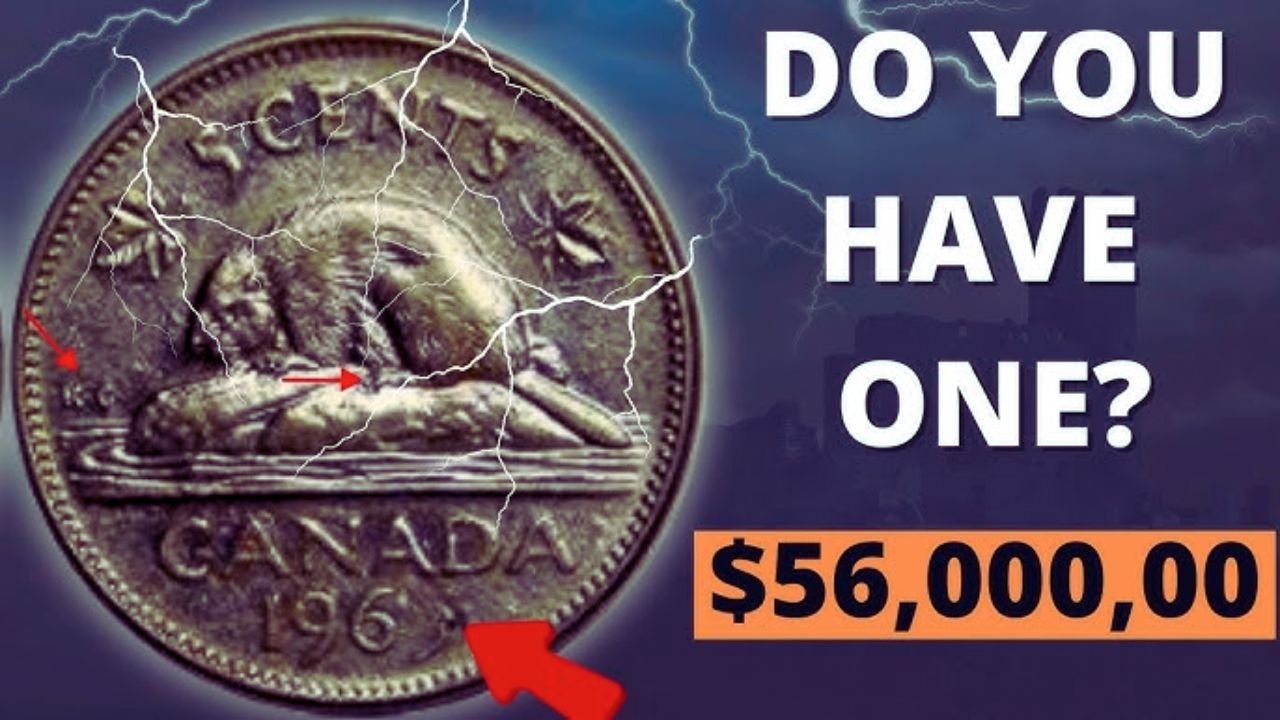A simple nickel in your pocket could be worth a small fortune! Among Canadian coins, certain error nickels, like the 1953 “Shoulder Fold” variety, are called the “Holy Grail” by collectors due to their rarity and high value. These mistakes from the mint make them incredibly special, with some fetching thousands of dollars. Whether it’s a misprint or a design flaw, error coins are a thrilling find. Let’s explore the 1953 error nickel and other valuable Canadian nickel mistakes that might be hiding in your change.
The 1953 Shoulder Fold Nickel
In 1953, the Royal Canadian Mint made nickels with two different designs of Queen Elizabeth II’s portrait. The “Shoulder Fold” (SF) version shows a clear fold in her dress, while the “No Shoulder Fold” (NSF) has a smoother look. The NSF variety is much rarer, especially in high grades, because the mint fixed the design mid-year. Made of 99.9% nickel and measuring 21.2mm, these coins can sell for $1,000 to $10,000 in uncirculated condition. A 1953 NSF nickel in top shape sold for $9,200 at a 2018 auction, proving its worth.
Why Error Nickels Are So Special
Error coins like the 1953 NSF nickel are valuable because they’re mistakes that slipped through the mint’s quality checks. Collectors love these quirks, as they tell a unique story. Other errors, like the 1965 “Large Beads” nickel, where the beads around the Queen’s portrait are bigger than usual, can be worth $50 to $500. The 2000 “P” nickel, accidentally struck with a test mark, is another gem, valued at $100 to $1,000. These errors make each coin a one-of-a-kind treasure that drives collectors wild.
Other Error Nickels to Hunt For
Beyond the 1953 NSF, other Canadian nickel errors are worth checking. The 1954 “Shoulder Fold” nickel with a “Mule” error (a mismatched front and back) is extremely rare, with prices reaching $5,000 or more. The 1969 “Large Date” nickel, where the date appears bigger than normal, can fetch $200 to $2,000 in good condition. Even newer errors, like the 2001 “P” nickel with a double-struck design, are valued at $50 to $300. Low-mintage years like 1951 or 1955 also boost a nickel’s value if errors are present.
How to Spot and Sell Error Nickels
To find a valuable error nickel, grab a magnifying glass and check for details like the 1953 NSF’s smooth shoulder or the 1965 Large Beads. Look for double strikes, off-center designs, or odd markings. Keep coins in plastic holders to avoid damage, as condition is key to value. If you think you’ve got a rare error, get it graded by services like PCGS or ICCS to confirm its authenticity. You can sell through local coin shops, online sites like eBay, or auctions like Heritage. With nickel coins becoming less common, now’s the time to hunt.
Rare Canadian Nickel Errors
| Year | Error Type | Estimated Value |
|---|---|---|
| 1953 | No Shoulder Fold | $1,000–$10,000 |
| 1965 | Large Beads | $50–$500 |
| 1954 | Mule Error | $5,000+ |
| 2000 | “P” Test Mark | $100–$1,000 |
Start Checking Your Change
Canada’s shift away from nickel coins makes these error nickels harder to find, and their value keeps climbing. That jar of loose change or an old collection could hold a rare mistake worth thousands. The 1953 No Shoulder Fold nickel is the ultimate prize, but other errors are out there waiting. Next time you get a nickel, take a second look—it might just be the jackpot you never expected!
